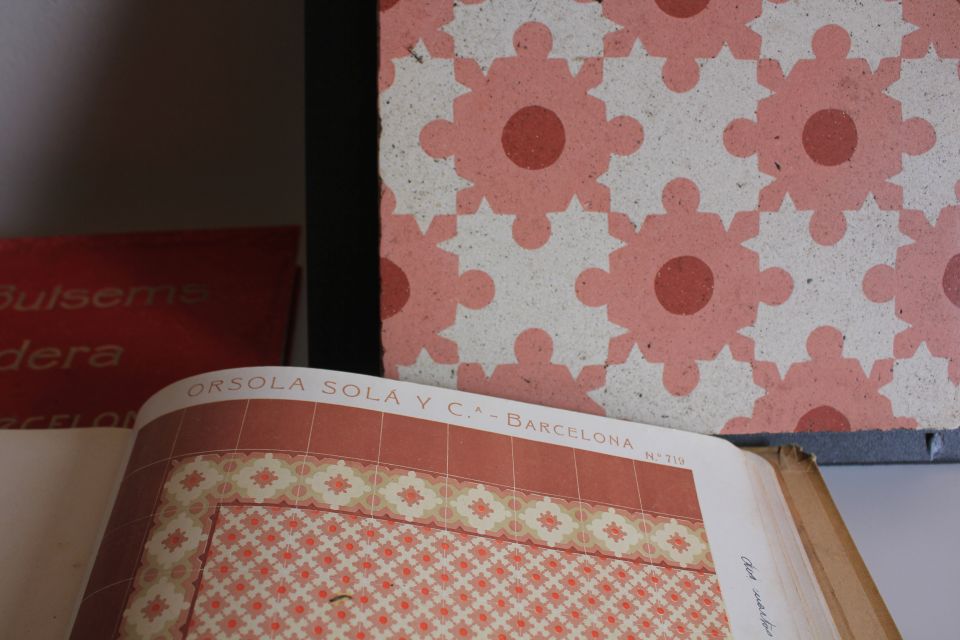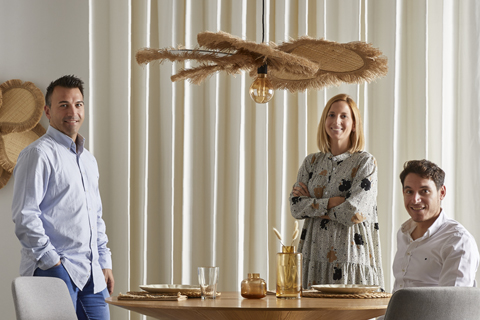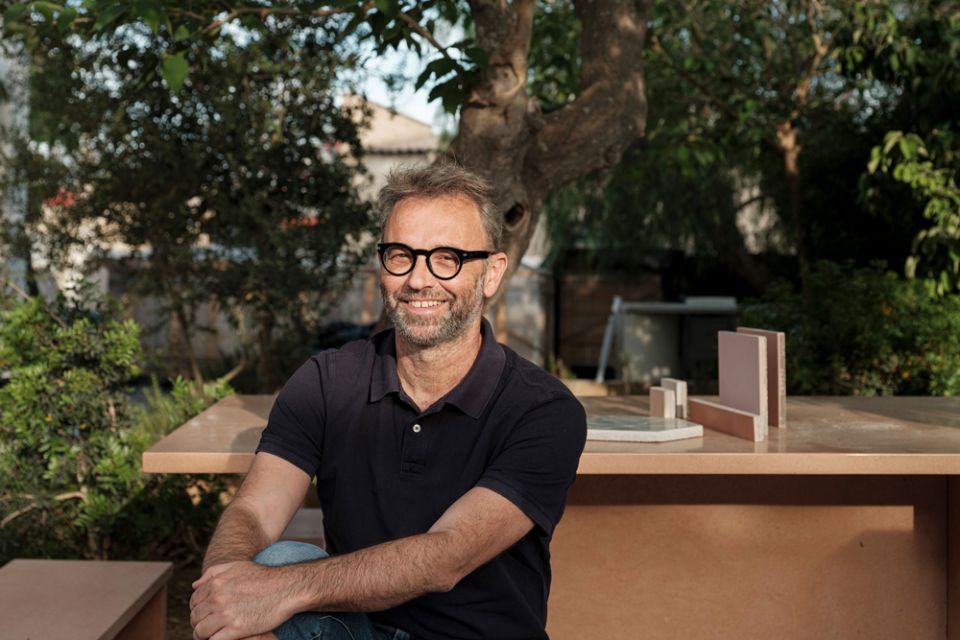The story behind hydraulic tiles: Interview with Joan Moliner
In this interview, Joan reveals his passion for hydraulic tiles and gives us a history lesson. A history that, thanks to people like him, is still part of the present in many homes.
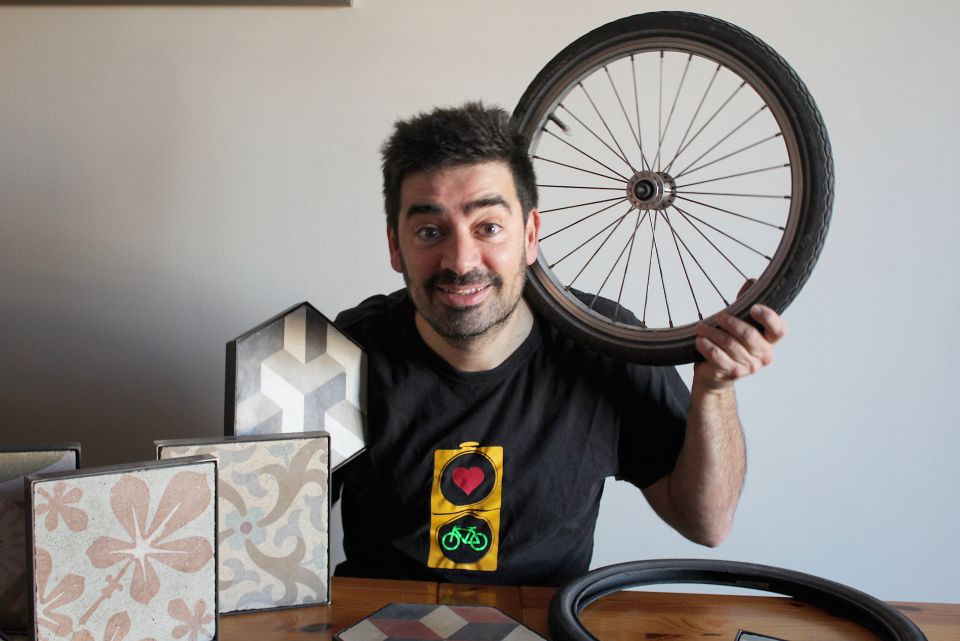
By Joan Moliner, creator of Rajoles from BarcelonaHe is a salvager, an archivist, a recycler and a lover of hydraulic tiles. He takes advantage of his bike rides to identify works in houses that could spoil some of these precious elements. He then restores them and gives them new life, recovering the artisan spirit with which they were created.
Tell us about yourself and your work. Any first memories?
The first memories I have of hydraulic mosaics are from my grandmother's house, a large flat in Ciutat Vella, where the floor in each room was different. I would spend time going over and drawing the patterns. I have always liked to draw, make crafts, find different uses for everyday objects.. But I started working in an office where I have been for the last 30 years and the creativity died out.
I got back into tiling about 4 years ago. It started as a hobby. I retrieve the tiles from the construction sacks I find on my daily bike ride from home to work. You start with one, then you want to see the pattern that four of them make together, then you want the border, the corner piece - one of the most sought after - and you end up with a collection that never stops growing, now with some 1,300 tiles accumulated on the terrace.
Having so many tiles in storage is all well and good, but I wanted to show them off, so my first mural of 10 tiles in my dining room was born. I've been riding my Brompton folding bike for about 15 years, and when I get home I leave it in the small hall. It occurred to me to make a table integrating the bicycle where I could leave my keys, letters... that's how my first table was born. Recover, recycle and reuse the tiles, recovering a part of the forgotten heritage.
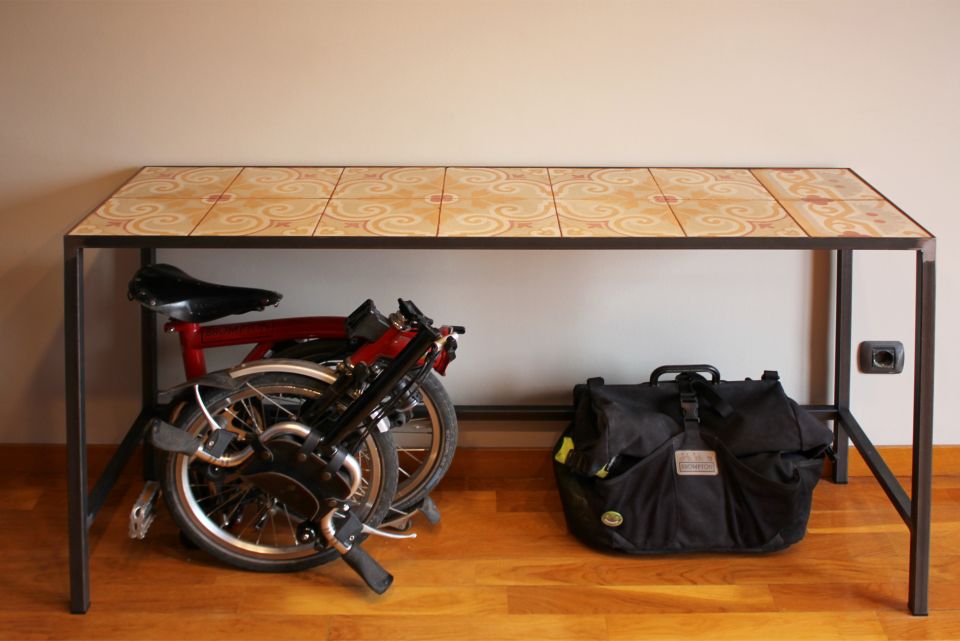
What do you find most satisfying about your work?
When someone buys one of my pieces and I explain where I recovered it, how old the tile is, the factory where it came from, the symbol that some manufacturers used... The visible side of the tiles is familiar, but the back side is often a surprise. where you can find hearts, stars, towers or rooster heads. People are surprised and appreciate all this information.
"I am passionate about the artisanal history behind it. From the initial design to the manufacture of the tools used to make them".
Any work you are particularly proud of?
I particularly remember a couple who came to choose tiles to decorate a wall of the flat they had recently moved into. Once they had selected the tiles, I explain to them the addresses from which each of them came. They are silent for a moment, I notice that something happens, I ask them... One of the tiles had been recovered a few months ago in the same building where they had gone to live. The tile was coming home. Something similar happened to me with a table, the tiles had come from a street where the owner played as a child. Sometimes I think it's the tiles that choose, it's exciting!
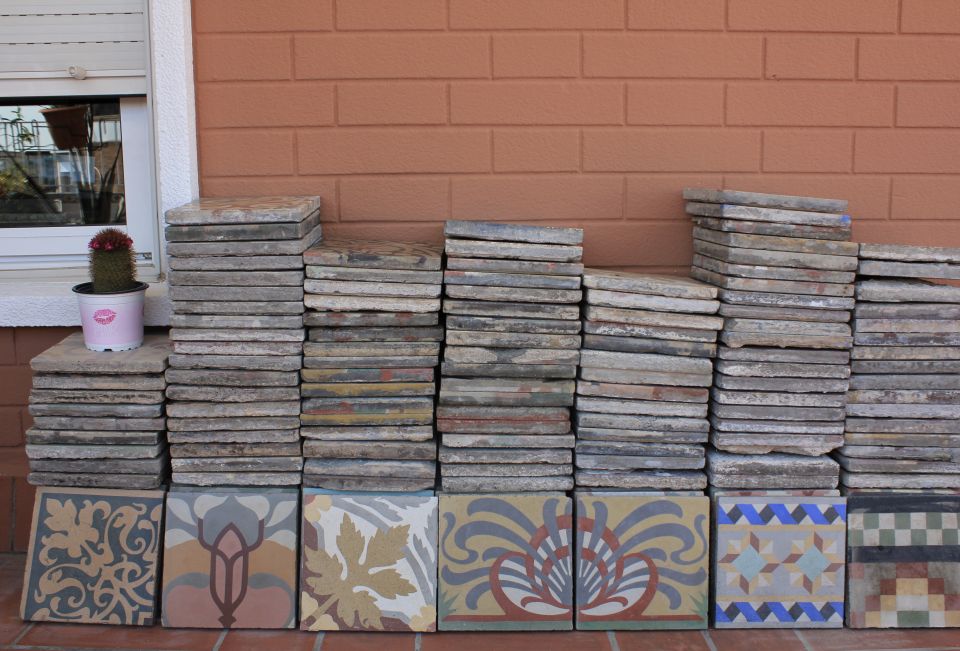
What is your creative process like? What are your sources of inspiration?
I don't have an established order and it depends a lot on the tiles I recover. When I have several of different models but with the same motif, such as dragons or flowers, I make a proposal in the form of a mural. I have also made some commissions for tables as a result of my photos on Instagram. One day, looking at the Instagram profile of an illustrator, I thought: "Her drawings would look great on this tile...". I proposed it to her and she accepted, we already had the first illustrated tile! I have made several collaborations with illustrators trying to harmonise their drawings with the motif of the tile..
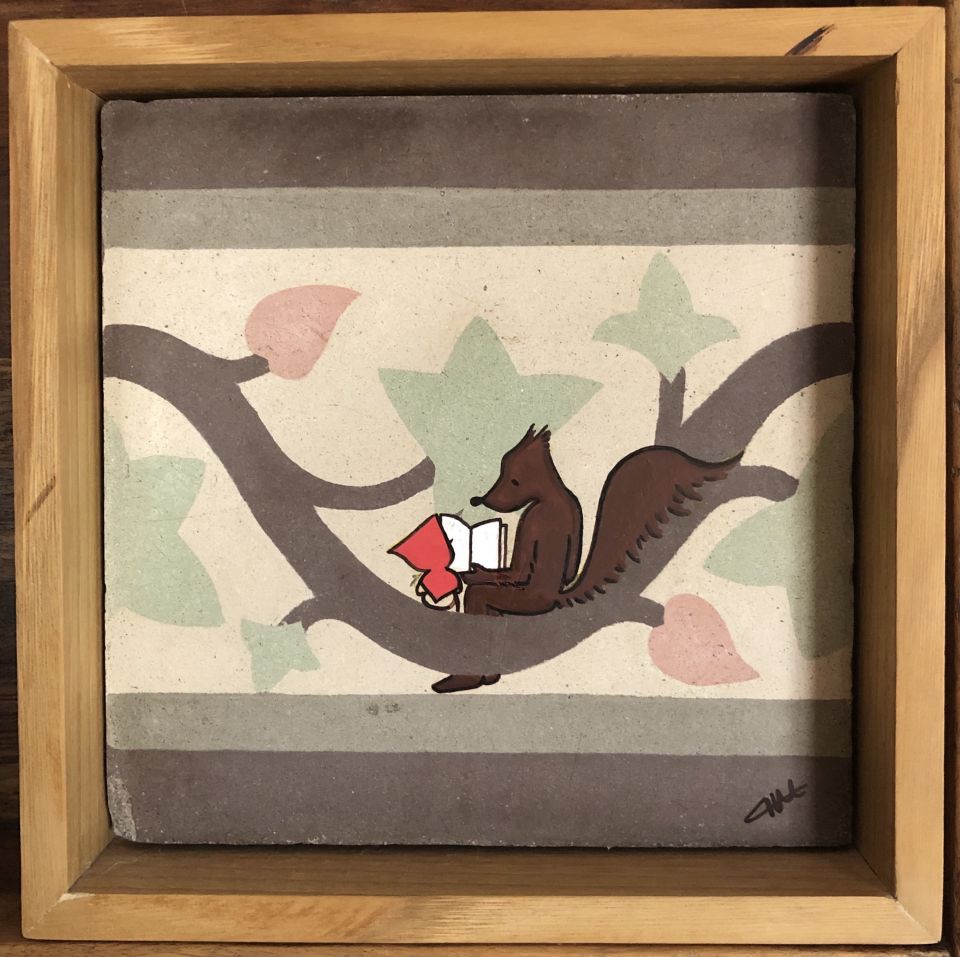
Any special music while working?
I listen to a lot of radio when I work, put on a podcast and pass the time. Sometimes, when I finish, I think: "What are they talking about today? I isolate myself in my world thinking about what stories these tiles, some of them more than 150 years old, must have lived through..
Favourite colour, book, film and record - in that order!
My favourite colour is green, without a doubt, the colour of nature and peace, essential in my life.
I couldn't choose a favourite book, but any book that talks about my city, Barcelona, will have my attention.
In the field of cinematography, I would choose Hitchcock as director. Sharing space with the tiles, I have a poster of the film The indiscreet window. Any of the classics featuring Katharine Hepburn, Cary Grant, Spencer Tracy....
Eighties music, no doubt, I have this one. Spotify playlist with more than 15 hours of music from the 80s.
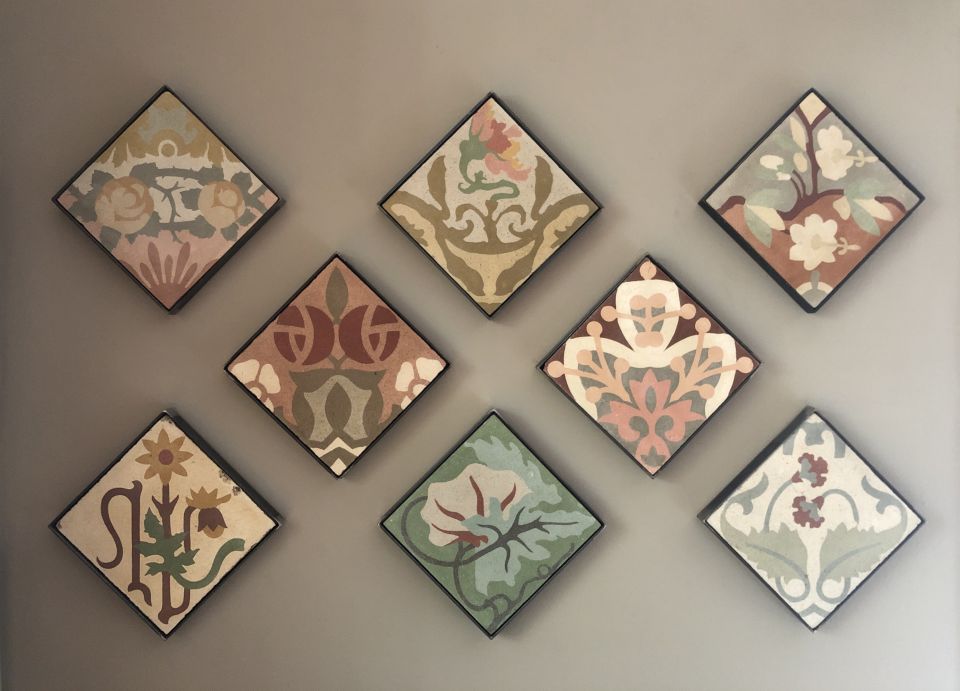
Is your home a reflection of who you are, do you have a favourite corner, do you treasure a collection?
The flat where I live is a space that has always been present in my life. I lived here when I was a child and time has brought me back. No doubt about it, my favourite place is the terrace, where I keep my collection of tiles.but also where I work and where I spend time with my family.
If you could buy anything right now and take it home, what would it be? Anything!
I have no great material ambitions, I have never coveted a big car or pretended to have possessions... Maybe I miss having a dog, I shared years with three, but in any case today I would adopt one, although there are different opinions in the family.
The tiles are part of Barcelona's identity, of our memory, a legacy that cannot be lost.
A great plan at home always includes...
Food, friends and music. So, back to the terrace: sharing moments, laughter. A couple of parties a year are never lacking.
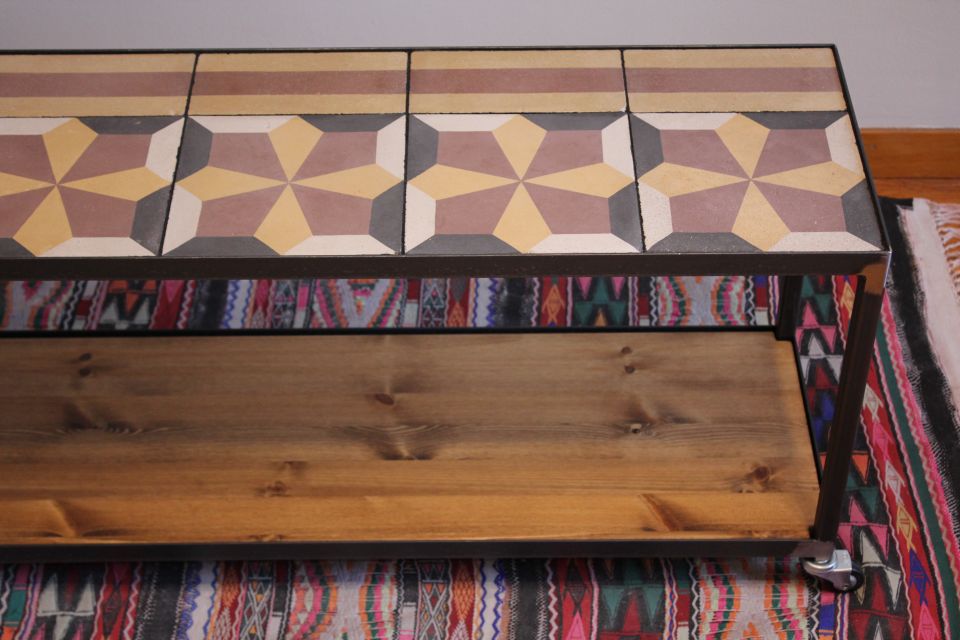
Do you have a signature dish?
Ever since I was a child I had to learn to make my own food, usually pasta or rice from various leftovers. I'm not a great cook, but I do have a few good dishes. For Christmas I always prepare scallops with ham. For everyday, hummus, potato omelette... I like to see what's left in the fridge and improvise.
Where is your favourite place in your city and abroad?
I have worked for the last 30 years in the centre of Barcelona, I have experienced the transformation of Ciutat Vella, the Ramblas, the growth of tourism and the loss of places that were once special. I get a bit overwhelmed by the crowds, so I try to find somewhere quiet. There is a beautiful park far from all this, the Tamarita gardens: the vegetation envelops you, it's an ideal place to breathe, take a walk with the children or read the newspaper on Sundays.


Anything you want to tell us that we haven't asked you, speak now or forever hold your peace!
Recovering tiles and trying to make something beautiful out of them has led me to discover a world unknown to me. I am passionate about the handcrafted history behind them. From the initial design to the manufacture of the utensils to make them.. They began to be made in factories around 1860, but the process was entirely manual. Each one was made by an operator, one by one, and installed by a trowel. A hundred years later, another trowel takes them out, I retrieve them from the work sacks and do the cleaning work by hand, as much as I can.
Around 1950, the decline of hydraulic tiles began with the appearance of terrazzo. Many factories were closed and a great deal of information was lost. Hydraulic tiles have been made in different countries, but I think that the tiles are part of the identity of Barcelona.A legacy that cannot be lost. I have started a collection of old catalogues of the different tile manufacturers: Orsola Solá y Cia, Escofet, Butsems. In some of them appear the names of the designers, architects and artists of the time, such as A. Sauri Sirés, Alexandre de Riquer, Josep Pascó, Puig i Cadafalch... All this is part of our culture.
